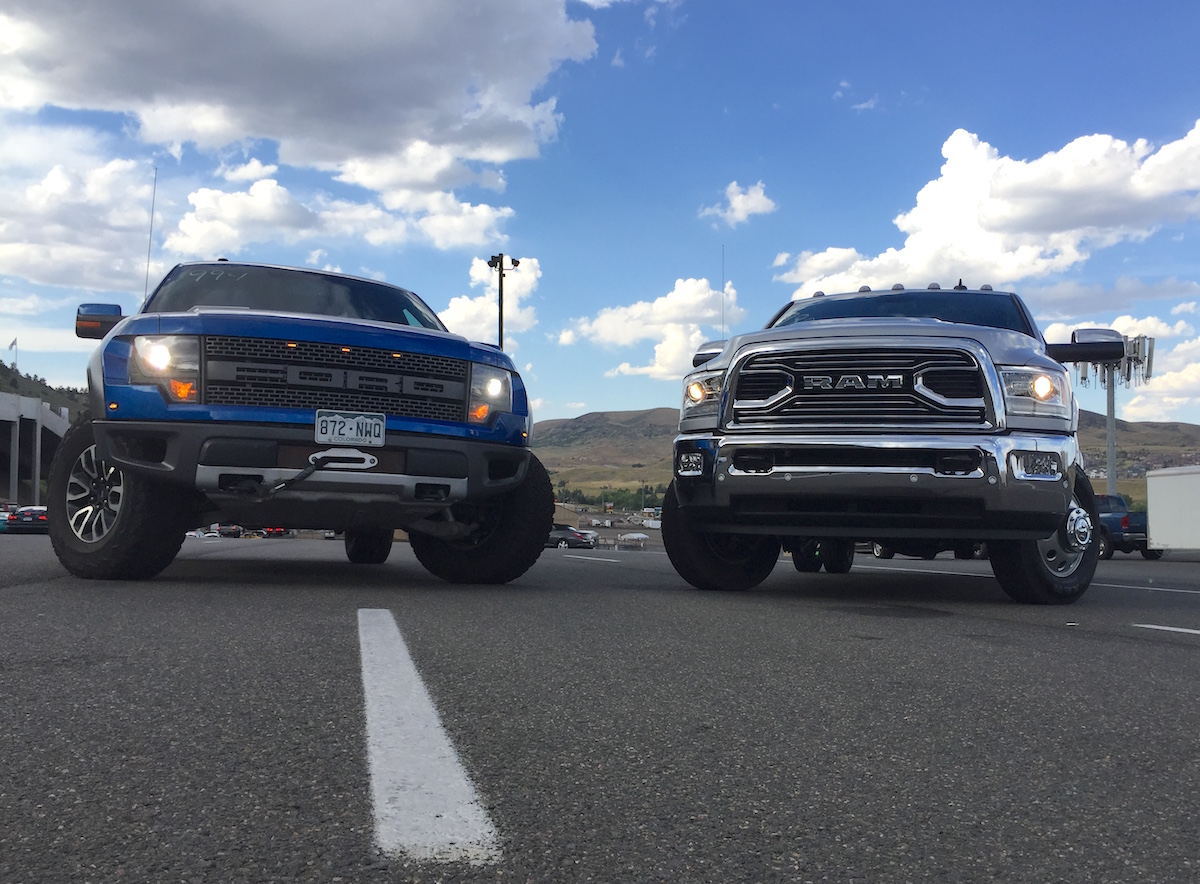Here is the first installment of the TFLtruck Ike Gauntlet – Light Duty Edition. The 2013 Toyota Tundra CrewMax 4×4 is first to step up to this extreme towing test.
This Tundra is equipped with the 5.7-liter iForce V8 paired with a 6-speed automatic transmission. This engine has Variable Valve Timing with Intelligence (VVT-i) and produces 381 horsepower at 5,600 rpm and 401 lb-ft of torque at 3,600 rpm. This truck’s wheelbase is 145.7 inches and it’s rated at 7,200 lbs GVWR, 1,330 lbs of payload or a maximum 9,000 lbs of towing capacity. This Tundra Limited has an extra low 4.30 rear axle ratio, which is good for towing and not so good for fuel economy. The ‘as tested’ price of this truck is: $46,518.
The temperature was around 70 F during the test, and we have not seen this many broken down vehicles on this stretch of the interstate in recent memory. The fact that the Tundra completed this test is a testament to how well it is built and how capable it is.
What Are We Towing?
We carefully chose a load that will stress these pickups near their maximum ratings. Enter the Diamond in the Rough – the 1978 Lincoln Continental Mark V Diamond Jubilee edition, which is sitting on a double axle flat bed trailer. Total weight of the Lincoln and trailer is: 7,120 lbs. Yep, this Lincoln has a lot of heft. That’s not all. Don’t forget that Roman, Nathan, and Mr Truck Kent Sundling are in the truck to provide the data and commentary. Lets just say that the guys and gear add another 850 lbs – if we are rounding up.
The Way Up
The engine and transmission will be stressed to the max gaining more than 2,000 feet of elevation in just eight miles. The average grade of this climb is 7%. And the engines will be starving for oxygen and struggling to make power at the 11,158 ft finish line. The test is to use maximum throttle input on the way up in order to maintain the 60 MPH speed limit (or the maximum speed the truck is able to maintain below that). This is also a test for the driver as very slow moving semi trucks and other vehicles are obstacles to maintaining momentum and staying at 60 MPH.
Going Down
We want to know how capable the brakes and transmission are descending from the tunnel to Silverthorne. This is perhaps even more important than being fast on the uphill. The trucks must be safe and practical on the way down. The measurement is simple. The trucks must maintain a safe and practical speed at or below the 60 MPH on the way down. We measure the brake rotor temperatures at the bottom and the truck with the coolest brakes is the winner. Of course, we also monitor the transmission and engine temperatures on all runs.
Check out this epic towing test here, and stay tuned for more Ike Gauntlet videos later this week.

Andre Smirnov is a life-long automotive enthusiast, writer, reporter, and software engineer. He has been a contributor at TFLcar since 2011. When not working or spending time with the family – you can find him tinkering in the garage or simply ‘going for a drive’.


















![Which is More Reliable: 3.5L EcoBoost or 5.0L V8? [Reader Question] Second-generation 3.5-liter EcoBoost engine](https://tfltruck.com/wp-content/uploads/2016/05/Second-generation-35-liter-EcoBoost-engine.jpg)
![Which Silverado Engine to Get: 5.3L or 6.2L V8? [Ask TFLTruck] 2016 chevy silverado](https://tfltruck.com/wp-content/uploads/2015/10/2016-chevy-silverado-grille.jpg)
